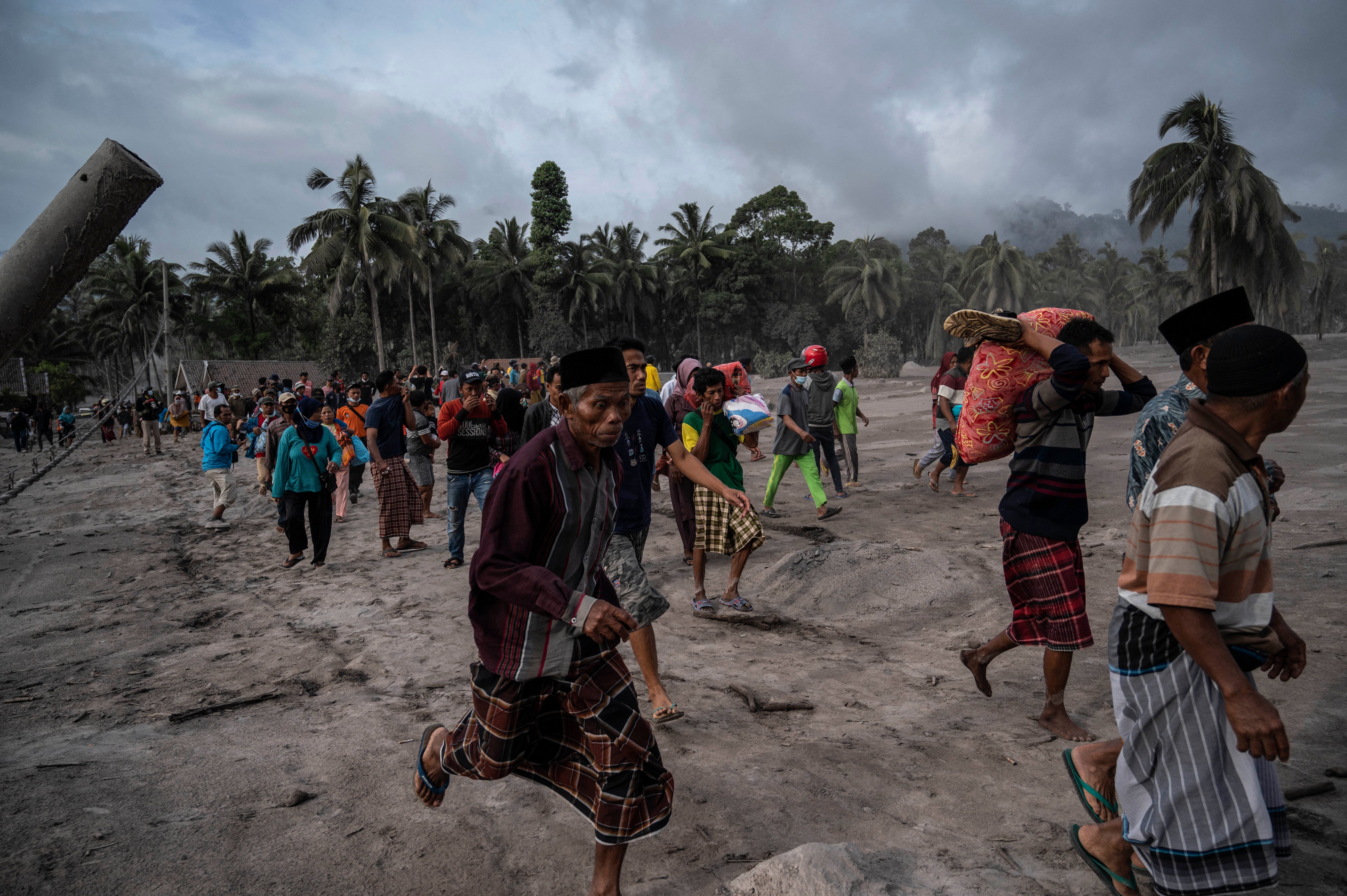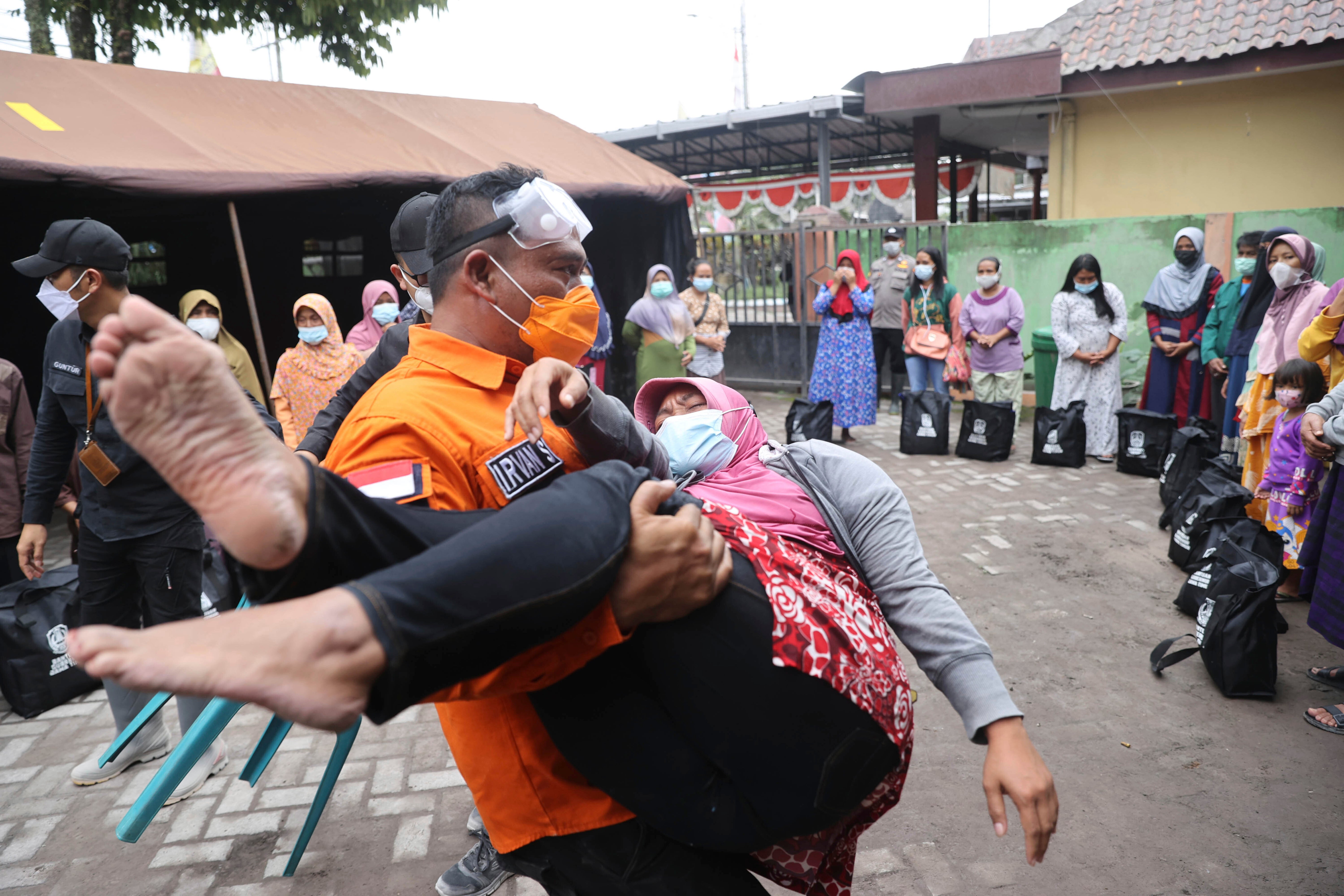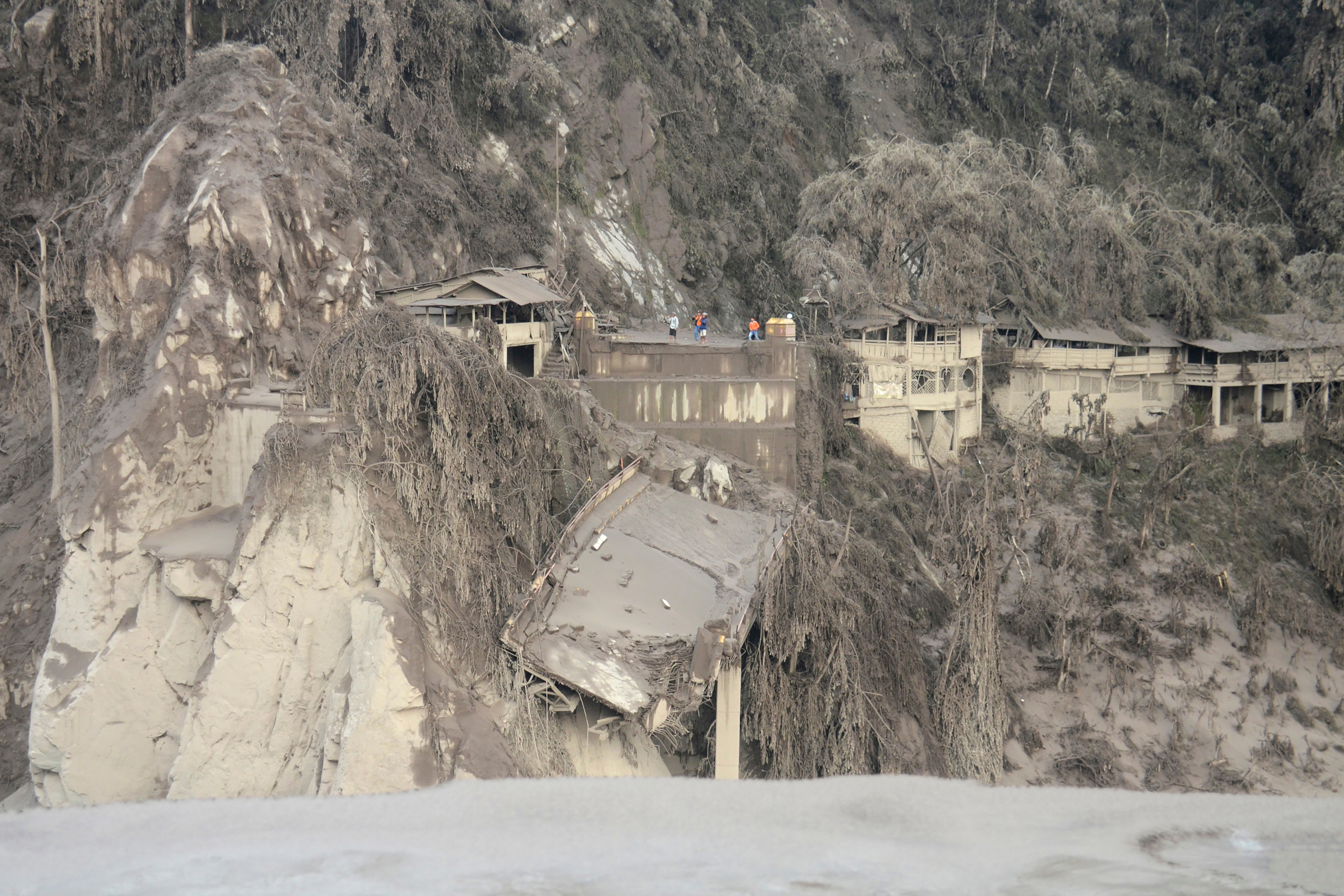Indonesia: Mount Semeru volcanic eruption kills at least 14 as thousands flee
Rescuers say lush green villages have now become ‘death zones’

Your support helps us to tell the story
From reproductive rights to climate change to Big Tech, The Independent is on the ground when the story is developing. Whether it's investigating the financials of Elon Musk's pro-Trump PAC or producing our latest documentary, 'The A Word', which shines a light on the American women fighting for reproductive rights, we know how important it is to parse out the facts from the messaging.
At such a critical moment in US history, we need reporters on the ground. Your donation allows us to keep sending journalists to speak to both sides of the story.
The Independent is trusted by Americans across the entire political spectrum. And unlike many other quality news outlets, we choose not to lock Americans out of our reporting and analysis with paywalls. We believe quality journalism should be available to everyone, paid for by those who can afford it.
Your support makes all the difference.At least 14 people were killed and dozens were injured after Indonesia’s Semeru volcano erupted.
Disaster management teams continued to search for victims on ash covered land on Sunday as nine people were still missing.
The tallest mountain of Java island suddenly began erupting around 2.30pm on Saturday, spewing towers of thick ash as high as 40,000ft with lava and hot gas flowing down and ash blanketing 11 villages in the eastern part of the island.
Photos and videos on social media showed destruction and panic as people screamed and ran under a huge ash cloud, their faces wet from rain mixed with volcanic dust. Thousands of people were forced to flee their villages, leaving behind their possessions and livestock.
Search and rescue operations continued in deep layers of ash even as the weather condition, power cuts, rocks and hot volcanic sediments caused hurdles. One video showed police and military officials trying to excavate bodies with their bare hands.
Haryadi Purnomo of East Java’s search and rescue agency said nearby areas that were lush villages had now become “death zones”.
“There’s no life there... trees, farms, houses are scorched, everything is covered in heavy gray ash,” Mr Purnomo told Associated Press.

Officials said 14 people have been declared dead and at least 98 people, including two pregnant women, were injured. Some of the injuries were severe burn cases, while some suffered respiratory problems.
National Disaster Mitigation Agency spokesperson Abdul Muhari said 56 people had been hospitalised, mostly with burns. He said rescuers were still searching for nine residents of Curah Kobokan village.
More than 1,300 villagers streamed into makeshift emergency shelters after Saturday’s powerful eruption, but many others defied official warnings and chose to remain in their homes, saying they had to tend to their livestock and protect their property, said Mr Purnomo.
“We’ll do everything we can to evacuate them by preparing trucks and motorbikes for them to flee at any time,” he said.
The eruption damaged houses and severed a strategic bridge connecting two areas in the nearby district of Lumajang with the city of Malang, authorities said.

The debris and lava mixed with rainfall to form thick mud that destroyed the main bridge connecting Lumajang and the neighbouring district of Malang, as well as a smaller bridge, said Thoriqul Haq, the district chief in Lumajang.
The chief of BNPB, Indonesia’s disaster management board, said it will rebuild the wrecked homes, and added that heavy equipment such as excavators and bulldozers were being deployed.
There is fear that smouldering debris and hot ash could tumble down from the crater due to heavy rain.
Indonesian president Joko Widodo said he instructed his cabinet ministers and disaster and military officials to coordinate the response. The government pledged to relocate residents from hardest-hit villages to safer places in the next six months and to provide 500,000 rupiah (£26) per month in compensation for each family while waiting for new houses.
The 12,000ft-high Mount Semeru has erupted many times over the last 200 years and remains one of 129 volcanoes under watch in Indonesia.
The country, with a population of 270 million people, is prone to earthquakes and volcanic activity because it sits along the Pacific “Ring of Fire”, a highly seismically active zone.
Additional reporting by agencies
Join our commenting forum
Join thought-provoking conversations, follow other Independent readers and see their replies
Comments